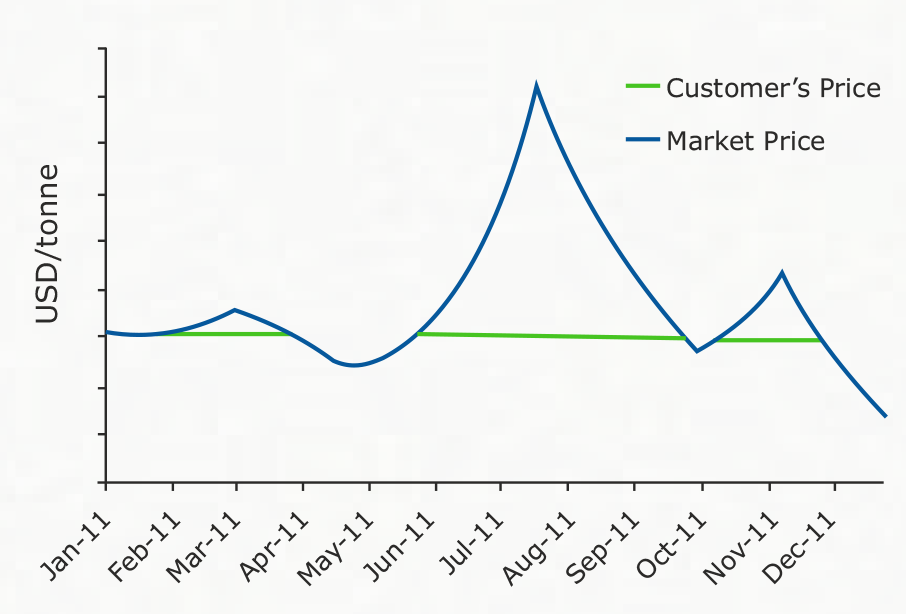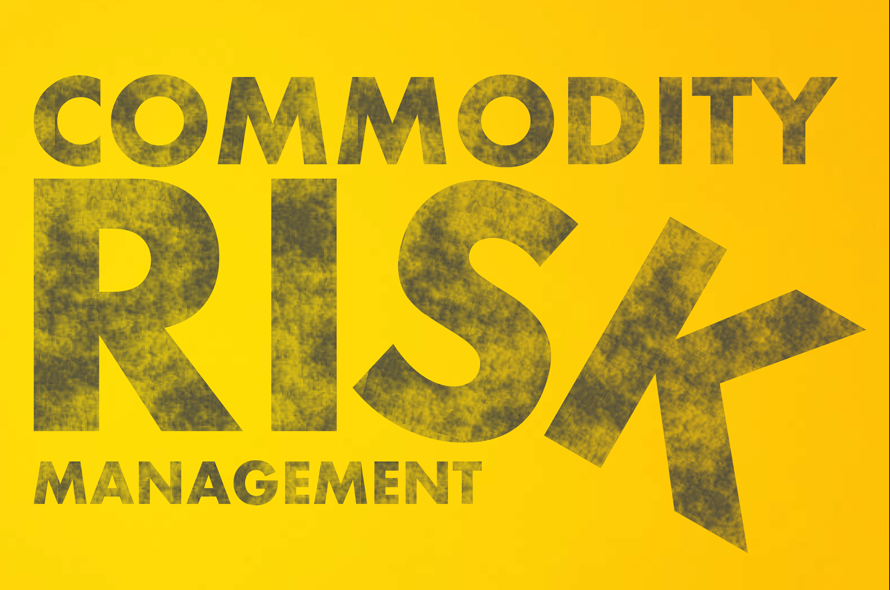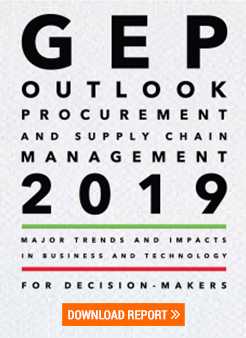Commodity price fluctuations pose a constant threat to profitability. Companies across the world employ innovative but complex strategies to overcome these risks.
Risk comes from uncertainty. And mitigating risk means reducing uncertainty. While it is theoretically impossible to predict the exact outcome of an uncertain event, there is always some scope for reducing uncertainty by working on factors that can be controlled.
In 2008, when other airline companies were bleeding money, Southwest Airlines was saving more than $70 on every barrel of aviation fuel it bought. Southwest gained a windfall competitive advantage through carefully crafted oil hedging strategies. The airlines had no control over the volatility in global oil prices, but it was able to tweak its purchasing portfolio and leverage volatility to its competitive advantage. Interestingly, the same company was suddenly exposed to the risk of losing billions of dollars when the prices dropped — an irony that has slowly started to become a commonplace in commodity management.

Look at market fluctuations as your friend rather than your enemy; profit from folly rather than participate in it.
– Warren Buffet
Recently, Ormet Corporation, a US-based integrated aluminum producer, filed for bankruptcy — for the second time — citing fall in aluminum prices (its end product) and rising energy costs. Risk management, therefore, has become a decisive factor in helping companies sail through periods of extreme uncertainty (see Figure 1.1 ). According to a recent PWC report on manufacturing, 47 percent of the senior executives surveyed indicated that they could pass only some or very few of their price increases. A whopping 83 percent indicated that they turn to other strategies to manage commodity risks, namely procurement contracts.
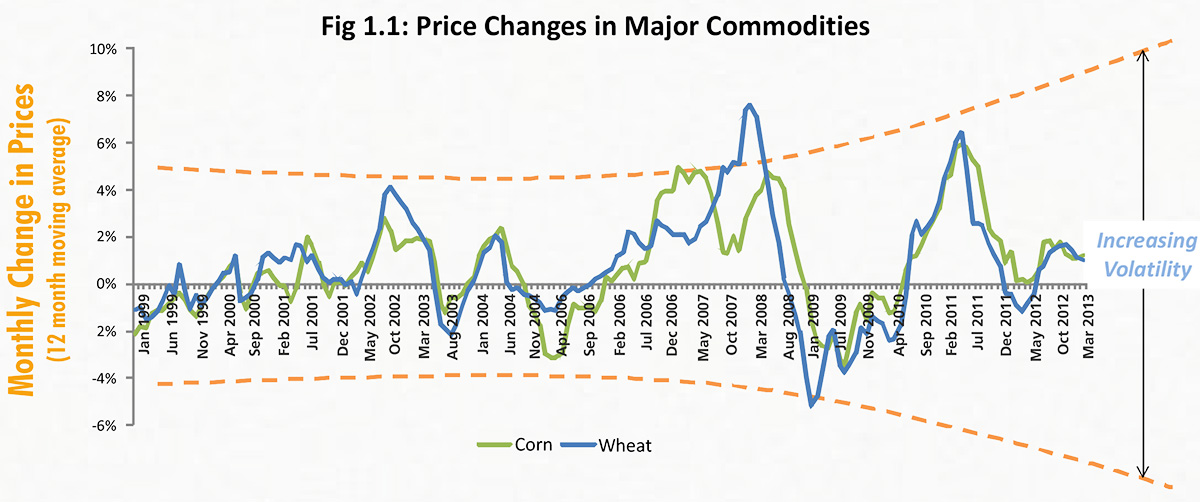
Some companies tend to view risk management as a budget compliance tool, whereas others view it as a means to generate savings. Regardless of the school of thought, risk management should be a key capability in an enterprise's procurement function — whether it’s protecting the P&L from large unexpected cost increases or supply chain disruptions, or keeping costs in sync with budget forecasts through incremental measures.
However, effective risk management comes at a cost – building and managing a risk management team, ascertaining the level of exposures in the market, and paying a premium for the hedging products. Companies that have a sizeable spend in commodities can quantify risk management costs and justify the expense. Some of them are market movers and can partly control the prices; some companies can enter into long-term partnerships with suppliers as they are able to command a sizeable portion of the supplier's business. A few companies vertically integrate and, at times, even go to the extent of acquiring a critical supplier in a completely different industry (a case in point being Delta's acquisition of an oil supplier). Such strategies have executive backing and the raw materials are typically managed by a large commodity sourcing team, either in-house or outsourced.
Setting up a large in-house team can be a tricky situation – a dedicated risk management team may eat into margins, but its absence might expose the company to huge, potentially life-threatening losses.
Nevertheless, there are risk levers available for procurement professionals to tide over commodity price fluctuations. The following example illustrates how GEP helped one of its clients improve margins through an effective hedging approach.
GEP was working with a food processing company that had a global presence. Canola and Palm Oil (in some regions) were used as non-core direct ingredients in the production; procurement strategies were largely localized due to the nature of requirements. Given the size of operations in Asia Pacific, the company had limited bargaining leverage with its oil suppliers, and volatilities in oil prices were impacting its margins significantly.
The client wanted to move away from intuition-based purchases to analyticsdriven purchases, and was not keen on setting up a dedicated risk management team.
The Company did not have any transparency into prices and there was huge resistance to moving from incumbents as they feared that the new suppliers may not be able to replicate the specifications required for their products.
Analysts at GEP performed a thorough assessment of the supply market, regional supply chain cost structures, value drivers, and advancements in oil refining and distribution. The team analyzed the historic prices of Canola and Palm Oil, and built predictive statistical models to forecast the impact of various parameters – such as soybean oil prices, weather forecasts, prices of substitutes, etc. – on crude raw material prices.
As mentioned earlier, in every commodity, there are ways and means to reduce uncertainty by controlling the controllable. GEP started by breaking the delivered price into individual cost components. A typical “delivered price” includes the following:
1. Crude Commodity Cost
This is the cost associated with the base commodity material. Whether it is vegetable oil or steel, it is relatively easy to trace the base commodity and identify a price index, in most cases. There is very limited control on this portion of the price and, unfortunately, it typically accounts for 50 to 80 percent of the final delivered price.
2. Conversion Cost
This is the processing cost associated with converting the base commodity into a consumable form. Depending on the position in the value chain, these costs could include one or more stages of processing. Suppliers typically provide this cost and it is, solely, a function of the processor's competitiveness; it is controllable.
Understanding processors' operations and manufacturing processes, their cost structures, relative positioning in the industry, and other relevant industry cost benchmarks, such as asset utilization rate, will help purchasing managers ascertain the “right” price for processing costs. Some companies even go to the extent of working closely with suppliers to drive efficiencies in processing and share the resulting benefits.
3. Freight cost
Often, suppliers will provide a freight cost to ship the commodity from their manufacturing premises to the customer's location. While it covers the most relevant freight component, there are savings opportunities outside of this as well.
Understanding the flow of material from suppliers' supplier to the customer's delivery location will help optimize distribution costs. For instance, if both, the supplier and buyer, have a national footprint comprising of several facilities, it would be worthwhile to develop a joint distribution strategy, right from the source of the base commodity to the end delivery location. Additionally, there have been significant advancements in transportation modes (for example, flextainers for transporting oil as opposed to traditional oil tankers) that help save important dollars.
Through an RFP and structured trilateral negotiations, GEP negotiated the conversion and delivery costs to align them with the market. In the process, the team selected the most appropriate toll manufacturing process (inclusion of additives for longer shelf life), worked with suppliers on the distribution model for optimum costs, and evaluated various material handling techniques (flextainers vs. oil tankers, etc.).
Then came the tricky part:
How to be on top of the crude commodity costs?
While managing conversion and freight cost is relatively simple, controlling crude commodity cost is a different game altogether. It requires procurement managers to keep track of the commodity market, price movements and its determinants.
Procurement managers should have clarity on the extent of market engagement required.
Would you want to track every movement in the market or would you rather block volumes for the whole year and sleep over it?
The hedging approach depends on:
1. Nature of Commodity
Level of volatility, reliability of forecasts, seasonality, availability of market indices, supply market complexities, to name a few
2. Internal Purchasing Requirements
Core vs. non-core products, seasonal vs. yearlong purchases, inventory policies, carrying costs, etc.
The approaches2 can be classified into four broad categories:
| Hedging Approach | Description | Nature of Commodity | Internal Purchasing Requirements |
|---|---|---|---|
| Fixed-price hedge | Create a fixed-price hedge for a given period (delivered prices remain the same) | Relatively low volatility, availability of reliable supply forecasts, nonseasonal commodities, | Steady volumes and yearlong purchases, non-core products, high carrying costs |
| Back-to-back purchasing | Link commodity portion to an index, leverage volatility by changing order quantities | Medium to high volatility, seasonal commodities, patchy supply forecasts, complex supply market | Medium variance in volume requirements, seasonal purchases, applicable to core and non-core products, low carrying costs |
| Formula-based pricing | Link commodity portion to an index and move with market (order quantities do not vary much) | Low volatility, less complex supply market, non-seasonal commodities and availability of reliable supply forecasts | Small variance in volume requirements, yearlong purchases, applicable to core and non-core products |
| Price ceiling with an option to share gains | Create a financial hedge to fix the ceiling price. Book profits during times of low prices | High volatility, seasonal and non-seasonal commodities, unreliable supply forecasts, complex supply market | High variance in volume requirements, core products, high carrying costs |
2 Approaches are applicable only for those commodities where a reliable market index – with a strong correlation to the spot prices – is available. In the absence of an index, buyers can use an index of another commodity that closely tracks the movements of the needed commodity or engage with more than one supplier to ensure the quoted prices are a reasonable indication of market movements.
Though the factors mentioned in the preceding table are mere guidelines, the final decision largely rests on the “risk appetite” of the commodity manager. Payoff for a “price ceiling with option to share gains” requires a higher risk appetite than a fixed-price hedge.
In the aforementioned case example, for the commodity portion of the price:
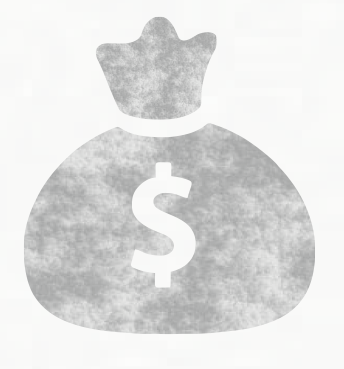
We collected prices on a weekly basis to assess the buying power of various suppliers. Suppliers were ranked on factors such as oilseed purchase price, yield ratio, ability to maximize revenue of by-products, commodity carry cost, etc.
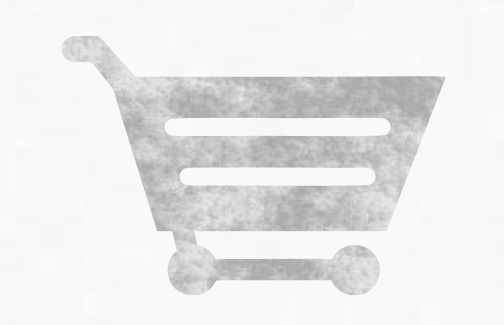
We selected a “back-to-back” purchasing strategy as the price forecasts models were reliable; the option of a financial hedge came at a very prohibitive cost.
The final award decision was based on the overall total cost of acquisition, which included commodity costs, conversion costs (manufacturing overheads, asset utilization, and operational efficiencies), distribution costs, and qualitative factors such as sustainability, financial liquidity, and asset management practices, etc. Post contract implementation, we set up the following process for pricing revisions for the tenure of the contract.

Whenever the buyer requests a quote, supplier will provide a quote and GEP will share the “should be” price and provide recommendations.
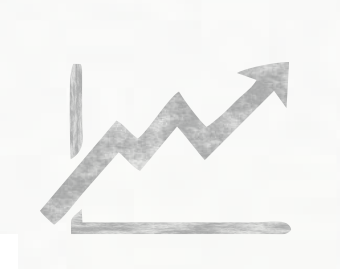
Based on the market conditions and inventory situation, buyer will make a decision on the order quantity and the time of purchase.
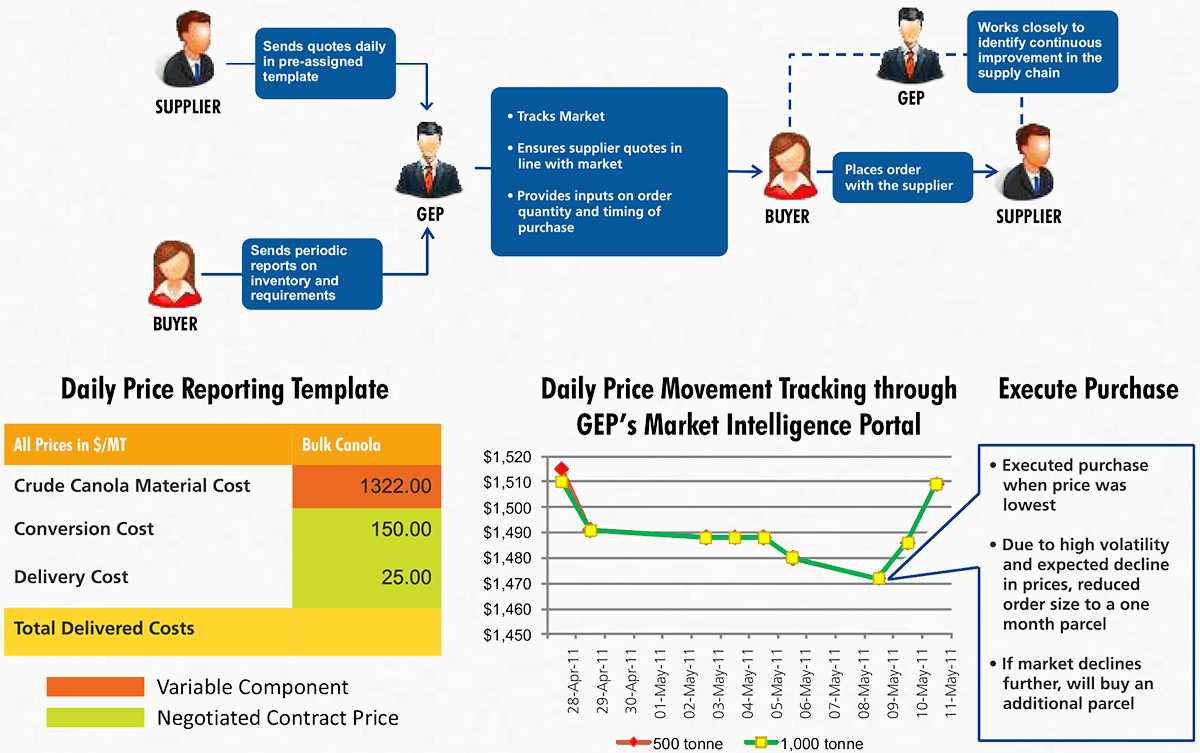
As a result

The team achieved a savings of 15 percent on the overall price (only the conversion costs and freight costs are considered) and aligned the costs with the industry.

Buyers were now able to make informed purchase decisions and control price movements, thanks to improved price transparency and robust price forecast models.

Procurement team was able to provide recommendations on production runs.
Conclusion
The nature of commodities, internal purchasing requirements and risk appetite, together dictate the nature of sourcing management. Commodity buyers should perform thorough due diligence to understand the external market dynamics and internal requirements to determine the appropriate risk management approach.
An effective commodity risk management program will prove to be a key competitive advantage for firms involved in this space. The following figure is a summary of the various sourcing value drivers available to purchasing commodity managers.
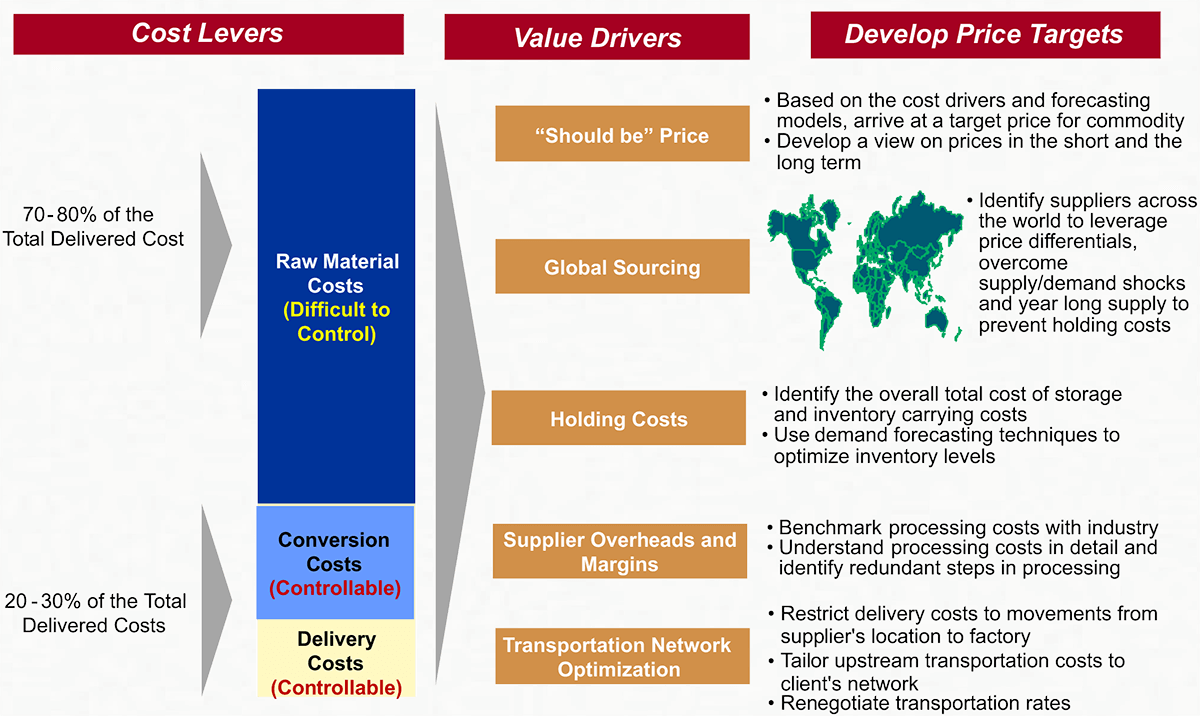
It may appear to be an unconquerable beast at the outset; however, controlling the controllable is the key to success. Since all the competitors are also subject to similar market conditions, risk management is the only way of ensuring “competitive prices”.

Only when the tide goes out do you discover who's been swimming naked.
– Warren Buffet
Appendix
Fixed-price hedges
| Benefits | Shortcomings |
|---|---|
|
|
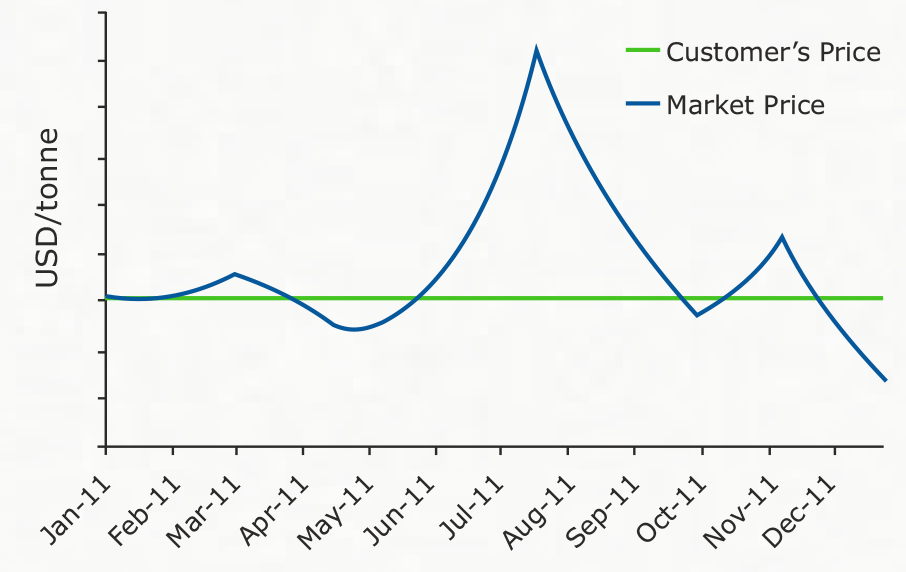
Back-to-back purchasing
| Benefits | Shortcomings |
|---|---|
|
|
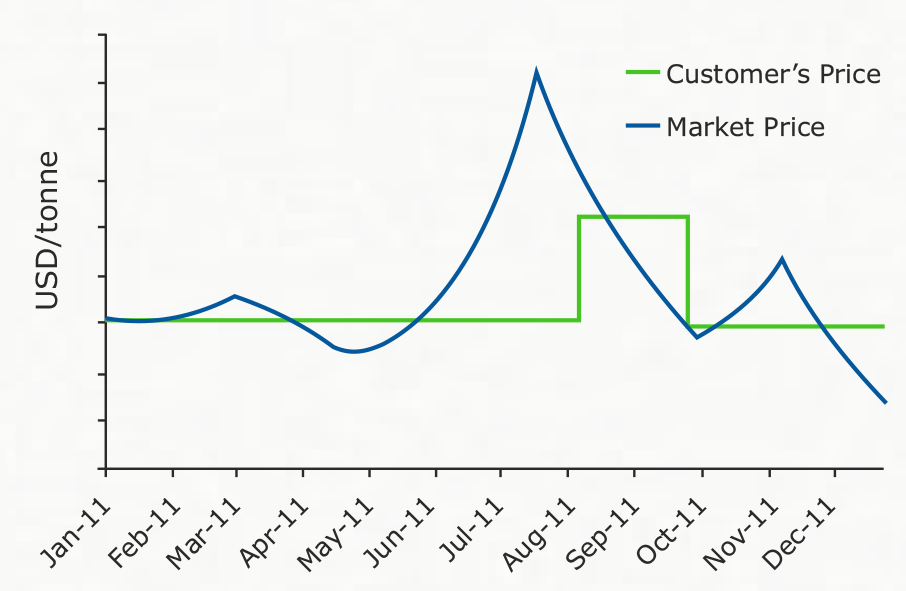
Formula-based pricing
| Benefits | Shortcomings |
|---|---|
|
|
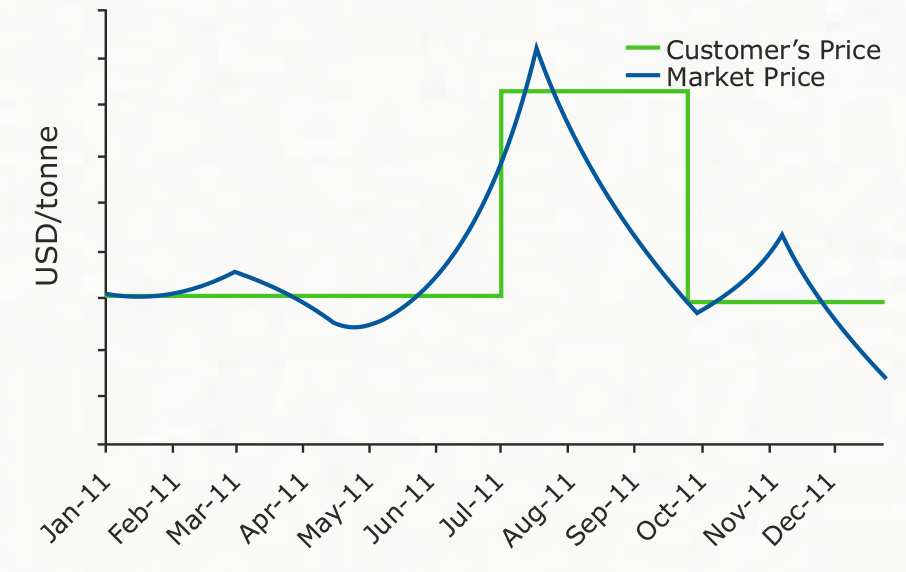
Price ceiling with an option to share gains
| Benefits | Shortcomings |
|---|---|
|
|
